Upon the creation of our Explorations section of Explore Kentucky Lake back in 2002 (which has evolved to this standalone site, Four Rivers Explorer), I had no idea at the time that this partially-removed railroad bridge and the “big building in the middle of Kentucky Lake” were related. So at that time, I did two different articles, only later realizing that these two structures are related.
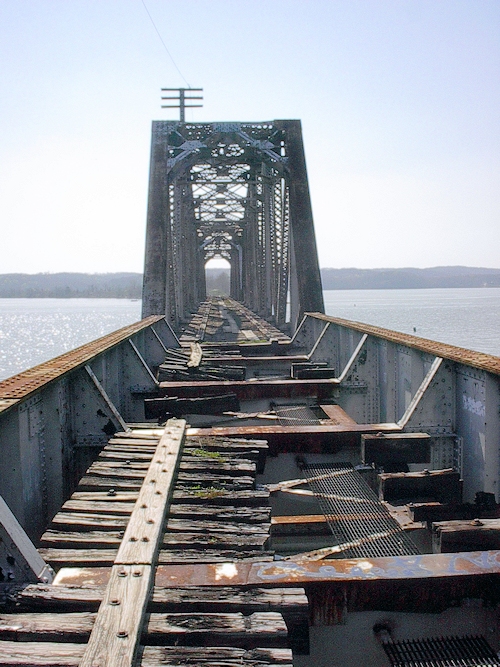
In May 2002, when we first explored this bridge, it was totally abandoned. Located at the end of Tennessee Highway 147 near McKinnon, Tennessee, at the former site of Danville, the railroad levee was easily accessible and anyone could walk right up on it. At that time, unlike today, no homes were near it – it was undeveloped.
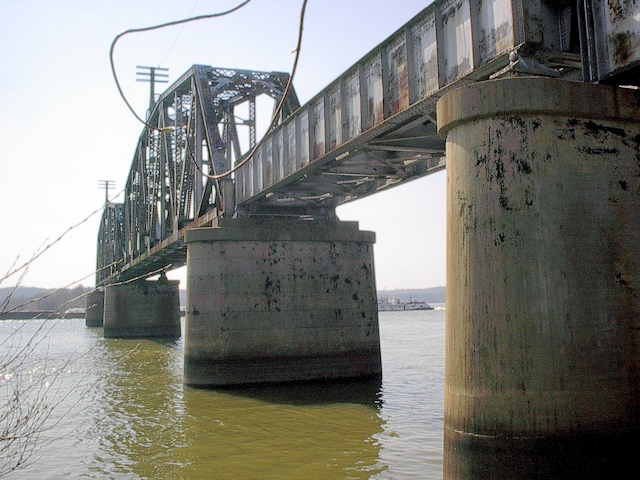
The site was a marvel. Two large spans and one small approach span remained with the rest removed. At the time, I didn’t know a whole lot about the bridge, so me and my wife took some photos and did some online research. I posted our initial photos on the old Explorations section of Explore Kentucky Lake. Over time, our readers submitted snippets of details and our research kicked into high gear in 2007 with an article I wrote for the print version of Four Rivers Explorer.
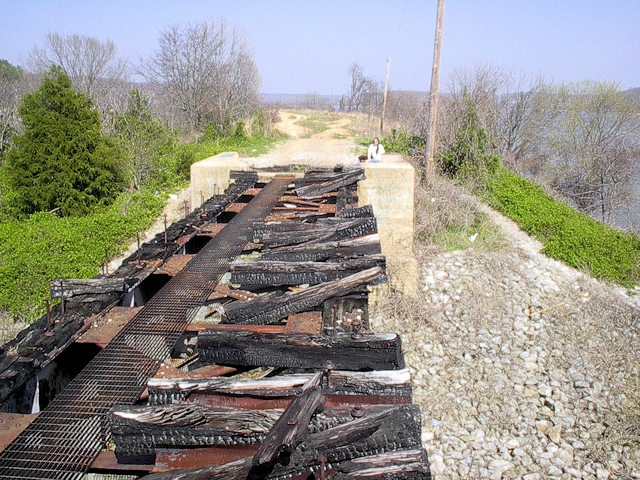
I obtained a ton of information about the bridge and the related “big building in the middle of Kentucky Lake” (which is known as the Old Danville Transfer Elevator) at the Houston County Public Library in Erin, Tennessee. It was then I found out that the bridge and the building were related.
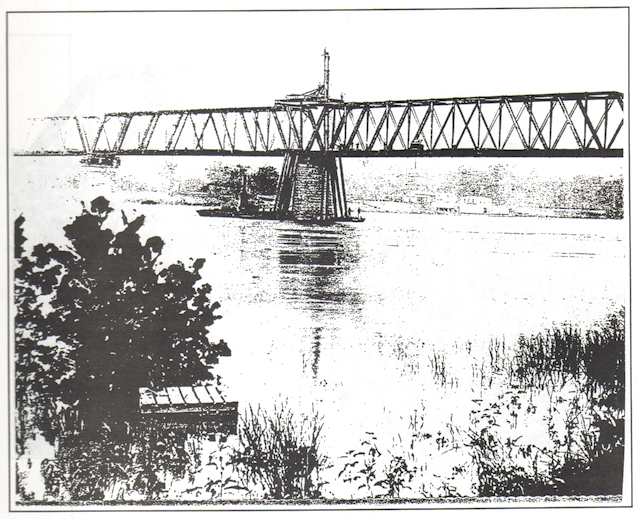
It all started in 1852, over 160 years ago. The Louisville & Nashville Railroad chartered and secured right-of-way through what is now Houston County. Workers moved in from all over the country to help build a major line from Paris, TN to Guthrie, KY. The last link of the railroad was completed when a bridge was constructed across the Tennessee River at Danville sometime in late 1860 or early 1861.
Confederate troops were stationed at the bridge to protect it from Union forces. during the Civil War. However, shortly after the bridge was completed, Union troops removed portions of the bridge to disable transportation across the Tennessee River. There are some conflicting accounts as to when this occurred, but it was probably sometime in February of 1861. Another account states the bridge was back in operation on April 10, 1861.
Rail transportation through this area didn’t pick up steam until the late 1800s. Most of the trains carried passengers, but soon freight was being hauled across the line. The L&N Railroad saw potential in the Danville Bridge and built a large transfer station on the banks of the river in 1914.
The transfer station, also called a wharf, was unique is design. It contained six levels with the bottom three being open for boats carrying cargo to unload their goods from the river. The lower levels accommodated the water level fluctuation of the river. Two twenty-horsepower elevators carried cargo from the lower levels to trains docked at the fourth level. Primary commodities were peanuts, grain, limestone, iron, and cotton. The entire process was all under one roof.
The original railroad bridge built in 1861 was aging and a new one was needed. Construction on a replacement bridge began on July 3, 1931, during the Great Depression. The new bridge was completed in November of 1932 at the cost of $706,432 (about $13.2 million in today’s dollars). It featured a vertical-lift span so steamboats and barges could pass through the bridge safely.
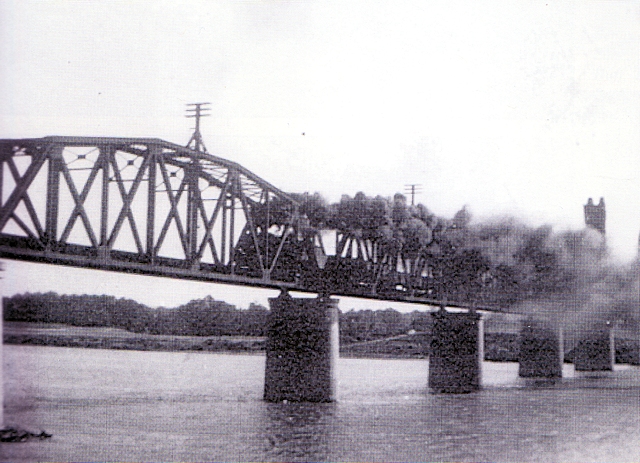
The following few years were the best for Danville. Up to 24 trains per day passed through in the 1930s. The community boasted a steamboat landing, several stores and saloons, a post office, hotel, and Masonic hall. However, in 1937, Danville and the lives of its 120 residents would forever be changed with the announcement of Kentucky Dam.
Construction started on the dam in Gilbertsville, KY, the following year. The Tennessee Valley Authority (TVA) told the people of Danville they had to move. The entire town would be flooded permanently, including the transfer station and the existing railroad.
The L&N Railroad Bridge had to be raised quite a bit to accommodate the new lake. A temporary wooden bridge was constructed adjacent to the existing bridge as a makeshift detour for trains.
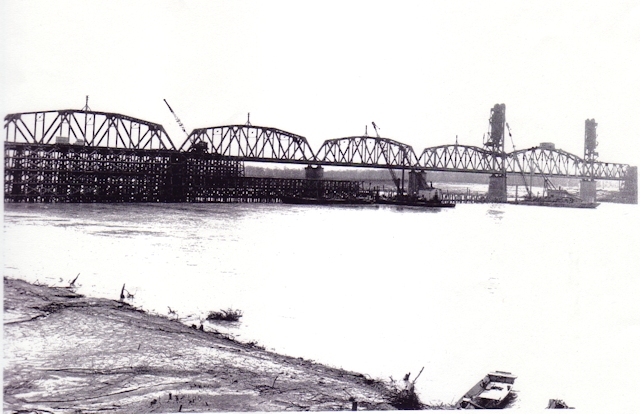
Two weeks after the temporary wooden bridge was built, driftwood began to jam up the pilings and a portion of the bridge collapsed. The timing was unfortunate; a train was approaching as the bridge fell. Thankfully, the train was moving slowly and was able to stop before plunging into the Tennessee River.
The bridge was successfully raised and a small portion of the railroad was relocated before the waters of Kentucky Lake flooded the area. Although the railroad could look forward to several more decades of service, the rest of Danville as well as the transfer station were inundated.
The railroad was operated by L&N until 1983. Seaboard Systems purchased the dwindling line and ceased operations two years later. In 1986, the company pulled the tracks from Paris to Cumberland City and began to sell the right-of-way.
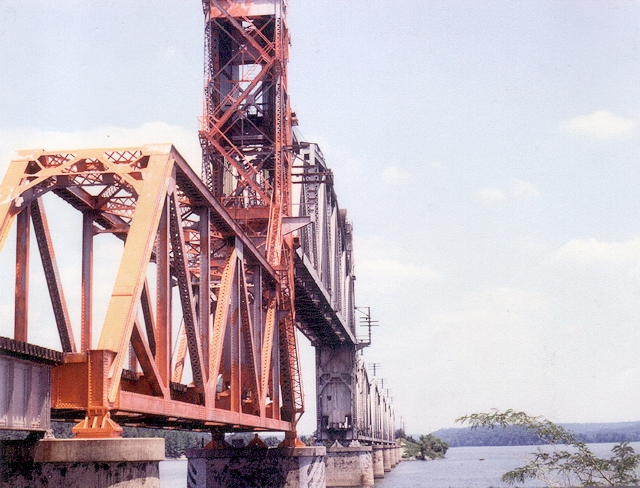
Today, portions of the abandoned railroad line have been completely obliterated with the construction of homes and businesses. However, the two spans of the old railroad bridge crossing Kentucky Lake still exist. The other three spans plus the vertical-lift span were removed, placed on barges and floated upstream to be used on another rail line.
It’s quite a site for boaters who come across the bridge today. The entire levee is privately-owned and homes have sprung up on the right-of-way. There is one home located right next to the bridge with a building on the first part of the bridge itself. Needless to say, the bridge is privately-owned is not open to the public.
In 1942, while Danville was being torn down, TVA, according to some reports, decided to keep the transfer station and use it as a channel marker. This is unusual since it is the only large structure left standing in Kentucky Lake. But now the only real purpose of the structure is the story it tells.
Location of the Bridge
Please keep in mind that access to the bridge is not recommended by foot, since it is privately owned. You can view the bridge from Kentucky Lake, the shoreline, or the ferry that crosses near the old bridge.


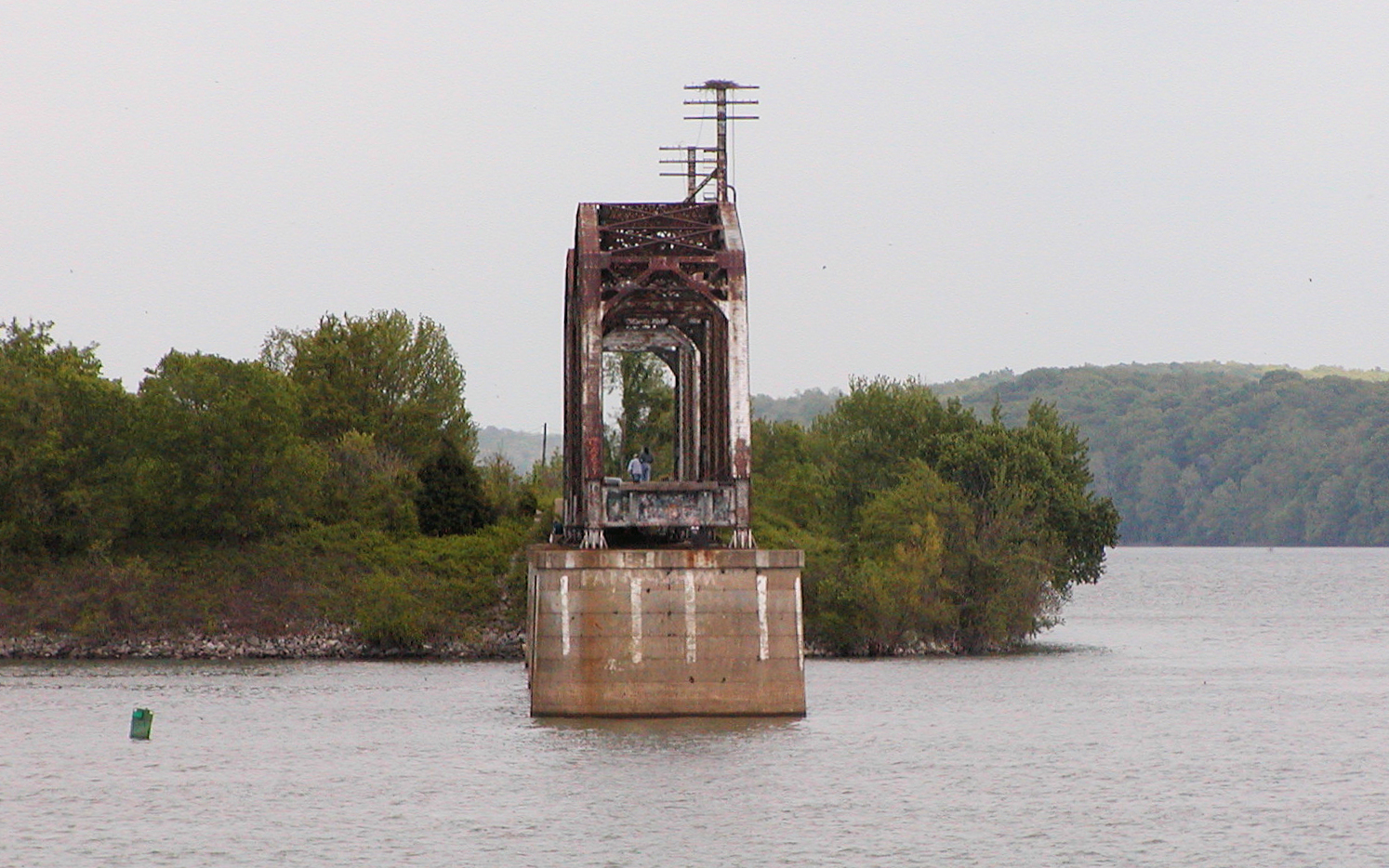
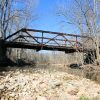
Pingback: New Photos of Old Danville Tennessee Railroad Bridge - Four Rivers Explorer
Pingback: Danville, Tennessee - Four Rivers Explorer